Mexico, a land of vibrant culture, ancient history, and breathtaking landscapes, offers an unparalleled travel experience. From the bustling streets of Mexico City to the serene beaches of Isla Holbox, adventure, romance, history, culture, and gastronomy await at every turn. Whether you’re seeking thrilling escapades, tranquil retreats, or immersive cultural encounters, Mexico has something to captivate every traveler. Explore ancient ruins, wander through colorful colonial towns, savor world-renowned cuisine, and bask in the warmth of Mexican hospitality. This guide unveils some of the best Places To Go In Mexico, ensuring an unforgettable journey through this mesmerizing country.
1. Mexico City: Immerse Yourself in Art and Culture
Best for: Art enthusiasts and vibrant cultural experiences.
Mexico City, the sprawling capital, is an essential starting point for any exploration of Mexico. A dynamic metropolis of over 22 million people, it seamlessly blends modernity with ancient history. Skyscrapers tower over historic markets, and serene gardens offer respite from the urban energy. The city’s museums are world-class, showcasing everything from pre-Hispanic artifacts to contemporary art.
A must-visit is the “Casa Azul,” famously known as the Museo Frida Kahlo. This is where the iconic artist Frida Kahlo lived and died, offering an intimate glimpse into her life and work. For art aficionados, Mexico City is a treasure trove of murals by some of Mexico’s most celebrated artists. Marvel at Diego Rivera’s epic murals in the Palacio Nacional, depicting the history of Mexico, and admire José Clemente Orozco’s powerful social-realist works in the Palacio de Bellas Artes.
To delve into the heart of Mexican culture, take a relaxing boat ride through the ancient canals of Xochimilco. Enjoy the festive atmosphere as mariachi bands serenade you while you float along these historic waterways. Indulge in the authentic flavors of Mexico by sampling delicious, piping-hot tacos from the numerous street food stalls in the downtown area. For evening entertainment, catch a performance at one of the city’s diverse theaters, offering everything from traditional plays to contemporary shows.
For a unique and spirited experience, witness the high-flying action of lucha libre (Mexican wrestling) at Arena México. The energy of the crowd and the spectacle of the masked wrestlers create an unforgettable night out. Mexico City is a city that truly never sleeps, offering an endless array of activities and sights to discover.
Planning Tip: Extend your Mexico City adventure with a visit to Teotihuacán, an awe-inspiring archaeological site just 50km (31 miles) northeast of the city. These ancient pyramids, once part of one of the largest cities in the Americas during the pre-Columbian era, are particularly special to visit during the vernal equinox for a unique spring celebration.
2. Isla Holbox: Discover Bioluminescence and Flamingo Paradise
Best for: Bioluminescent waters and pink flamingo sightings.
Isla Holbox, a small island off the northern coast of the Yucatán Peninsula, is a haven of biodiversity and tranquility. Despite being only a mile wide and 26 miles long, it offers incredible natural wonders. It’s one of the best places to go in Mexico to witness the captivating sight of bubblegum-pink flamingos in their natural habitat at Punta Mosquito. Between mid-May and mid-September, you might even have the chance to spot majestic whale sharks gracefully swimming in the surrounding waters.
One of Isla Holbox’s most magical attractions is the bioluminescent phytoplankton. On moonless nights, the water comes alive with sparkling, underwater fireworks as these glowing microorganisms illuminate the shoreline. This natural phenomenon is a truly breathtaking experience.
Holbox, pronounced “hol-bosh,” is a perfectly laid-back island escape. Cars are banned, ensuring peace and quiet, and sandy streets lead to pristine beaches with inviting, shallow waters, ideal for relaxing and wading. The island encourages disconnection, with intentionally unreliable Wi-Fi, allowing you to fully immerse yourself in its natural beauty and serene atmosphere.
 Woman admiring the parish church in San Miguel de Allende, Mexico
Woman admiring the parish church in San Miguel de Allende, Mexico
3. San Miguel de Allende: A Creative Hub of Craft and Art
Best for: Exploring craft shops and immersing in folk art traditions.
San Miguel de Allende is a city of captivating beauty, known for its spring-like climate, exceptional light, and stunning architecture. This charming colonial city is also a renowned center for handicrafts, offering incredible shopping opportunities, and hosts numerous art workshops. With a high concentration of art galleries, San Miguel de Allende is a magnet for creative individuals and one of the most culturally rich places to visit in Mexico.
Since the opening of its first art institute in a former convent in the 1930s, San Miguel has attracted artists and retirees alike. In the 1960s, it became a haven for literary figures like Jack Kerouac, Allen Ginsberg, and Neal Cassady. Today, the city retains its artistic soul, with narrow, cobblestone streets lined with boutiques and cafes adorned with colorful ribbons. Its atmosphere evokes a sense of stepping back in time, like wandering through a sepia-toned postcard.
The historic district’s buildings adhere to a harmonious color palette of saffron, ochre, terracotta, and mustard yellow, creating a visually stunning cityscape. For panoramic views, head to one of the city’s rooftop bars, such as Luna Rooftop Tapas Bar at Rosewood San Miguel de Allende, a popular spot to soak in the beauty of the city.
Planning Tip: San Miguel de Allende is conveniently located a three-hour drive north of Mexico City in the state of Guanajuato. Plan your visit in spring to witness the breathtaking sight of purple jacaranda trees in full bloom, adding another layer of beauty to this already picturesque city.
4. Bacalar: Experience Lagoon Living and Maldives-like Serenity
Best for: Tranquil lagoon experiences and a relaxing, bohemian atmosphere.
Bacalar is a truly magical destination, officially recognized as a “Pueblo Mágico” (Magic Town) by the Mexican government. Its crowning jewel is the ethereal Bacalar Lagoon, known for its mesmerizing jewel-toned waters. The town exudes a serene, bohemian vibe, complemented by spas offering traditional Mexican healing rituals.
Enjoy the vibrant atmosphere at El Manati, a tropical restaurant and gallery, where you can dine amidst bright murals and live music. For wellness seekers, Casa Hormiga boutique hotel provides experiences like temazcal sweat ceremonies and copal cleansings.
The main attractions in Bacalar revolve around the stunning 26-mile Bacalar Lagoon, also called the “Lagoon of Seven Colors” (Laguna de Los Siete Colores) due to its incredible gradient of blues and greens. Kayaking, paddleboarding, and boating are popular ways to explore its crystal-clear waters. The town also features a deep cenote (freshwater sinkhole) and an historic Spanish fortress. Often referred to as “the Maldives of Mexico,” Bacalar offers a peaceful escape and is one of the best places to go in Mexico for relaxation and tranquility.
Planning Tip: Bacalar is situated in the state of Quintana Roo, near the border with Belize. Public transportation is readily available; take an ADO bus from popular destinations like Cancún, Playa del Carmen, or Tulum for easy access.
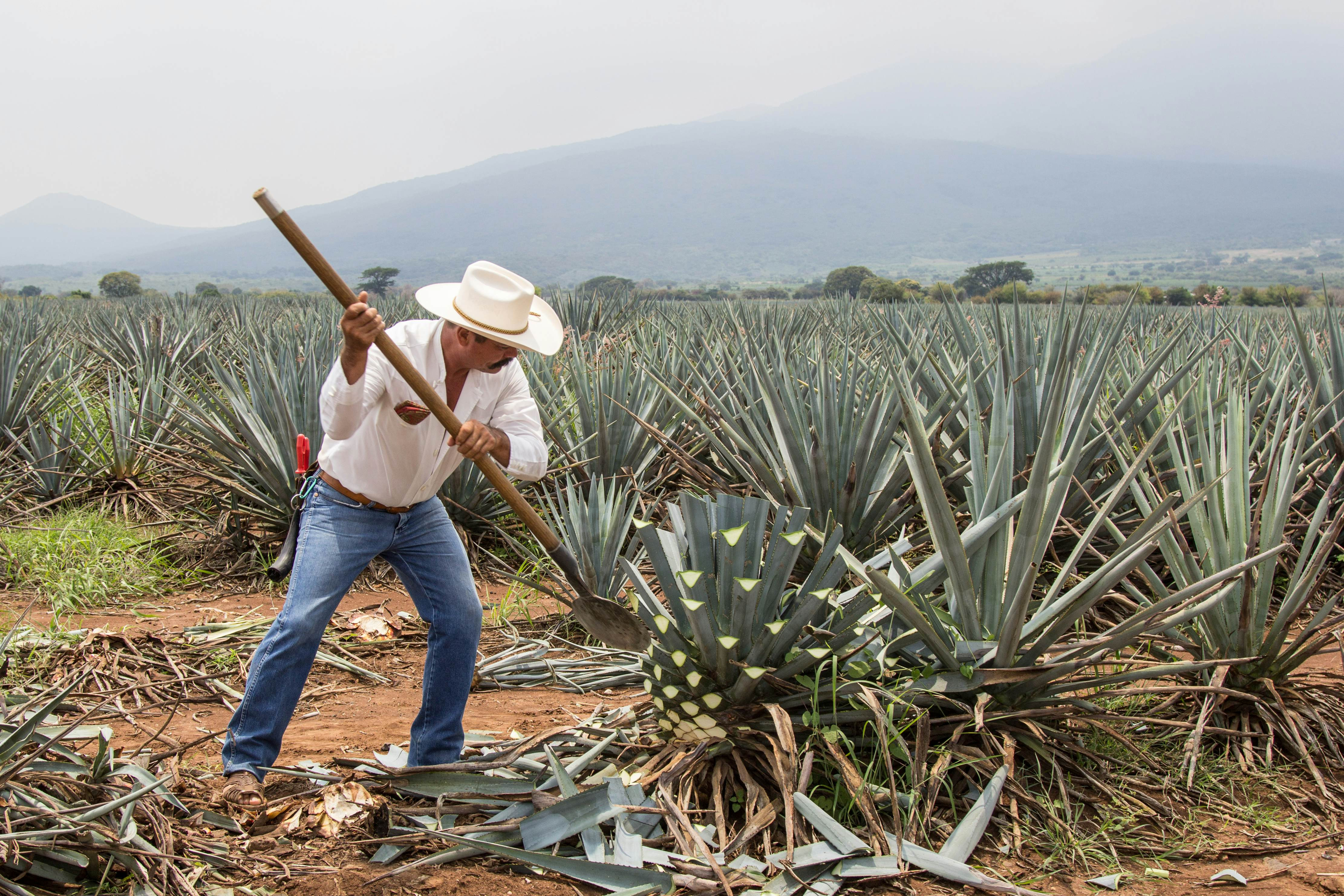 Jimador or Mexican farmer, skilled at harvesting agave for tequila on an agave plantation, Tequila, Jalisco, Mexico. Heavy, manual work, chopping the leaves from the body of the plant.
Jimador or Mexican farmer, skilled at harvesting agave for tequila on an agave plantation, Tequila, Jalisco, Mexico. Heavy, manual work, chopping the leaves from the body of the plant.
5. Guadalajara: Mariachi Music, Tequila, and Culinary Delights
Best for: Experiencing mariachi music, tequila culture, and fine dining.
Guadalajara, Mexico’s second-largest city, is a vibrant cultural hub located in the state of Jalisco. This region is the birthplace of both tequila and mariachi music, embodying the essence of Mexican traditions. It’s also home to charrería, Mexico’s national sport. Don’t miss the annual International Mariachi and Charrería Festival in September for a spectacular cultural showcase.
Key attractions in Guadalajara include a lienzo (charrería arena) where you can witness this exciting sport, and the Instituto Cultural de Cabañas, adorned with impressive frescoes by the renowned muralist José Clemente Orozco. Explore Mercado San Juan de Dios, Latin America’s largest indoor market, a bustling center of commerce and local life.
While deeply rooted in tradition, Guadalajara has recently emerged as a gastronomic hotspot, gaining recognition on the World’s 50 Best lists. Indulge in sophisticated, modern Mexican cuisine and innovative cocktails at acclaimed restaurants like Alcalde and El Gallo Altanero.
Planning Tip: Guadalajara serves as an excellent base for exploring the surrounding region. Venture out to Lake Chapala, one of Mexico’s largest freshwater lakes, discover the agave fields of Tequila, where the iconic spirit is produced, or explore charming “Pueblos Mágicos” like Tlaquepaque and Tapalpa.
6. Puerto Vallarta: Beaches, Adventure, and LGBTQ+ Welcoming Atmosphere
Best for: Beaches, adventure activities, and LGBTQ+ friendly experiences.
Puerto Vallarta, with its dramatic scenery and lush landscapes, is a beloved vacation destination for both Mexican and international travelers. Nestled between the Sierra Madre Mountains and the Bahía de Banderas (Bay of Banderas), it offers a perfect blend of adventure and relaxation. Thrill-seekers can conquer rugged terrain and rappel down waterfalls, while families can unwind on beautiful, sun-drenched beaches such as Playa Conchas Chinas, Playa Las Gemelas, and Playa Mismaloya.
Puerto Vallarta is also a popular destination for LGBTQ+ travelers, boasting a welcoming atmosphere with numerous gay-friendly hotels, beach bars, restaurants, and nightlife options. The Zona Romantica (Romantic Zone) is a charming area perfect for alfresco dining, and strolling along the Malecon boardwalk, adorned with bronze sculptures and street performers, is a delightful free activity.
The ocean surrounding Puerto Vallarta is teeming with life. Witness humpback whales breaching the surface, pods of dolphins playing in the waves, and mother turtles coming ashore to lay their eggs.
Planning Tip: The best time to visit Puerto Vallarta for baby turtle releases is between July and December. Some hotels, like Marriott Puerto Vallarta Resort & Spa, host special newborn turtle release ceremonies, a truly heartwarming experience.
7. Playa del Carmen: Urban Beach Vibes and Riviera Maya Gateway
Best for: Combining beach relaxation with city life and access to Riviera Maya.
Playa del Carmen offers the best of both worlds: a vibrant city with a fantastic array of restaurants and stunning white-sand beaches, some even connected to cenotes. The bustling Quinta Avenida, lined with palm trees, is the city’s main thoroughfare, offering a diverse mix of shops, lively street performances, and international dining options.
This versatile beach destination attracts a diverse crowd, from families building sandcastles to digital nomads working remotely and solo travelers seeking adventure. Nightlife enthusiasts flock to Calle 12 (12th Street) for vibrant clubs like Mandala, La Vaquita, and Coco Bongo. Playa del Carmen also boasts a thriving rooftop bar scene, with options ranging from the chic UMI Rooftop and Tokyo Kitchen to the relaxed BeRoof.
“Playa,” as locals call it, is also a convenient base for exploring the Riviera Maya. Day trips to nearby towns like Akumal, famous for turtle encounters, are easily accessible via colectivos (minivans). Direct ferries to Cozumel are also available from Playa del Carmen, offering opportunities for island exploration.
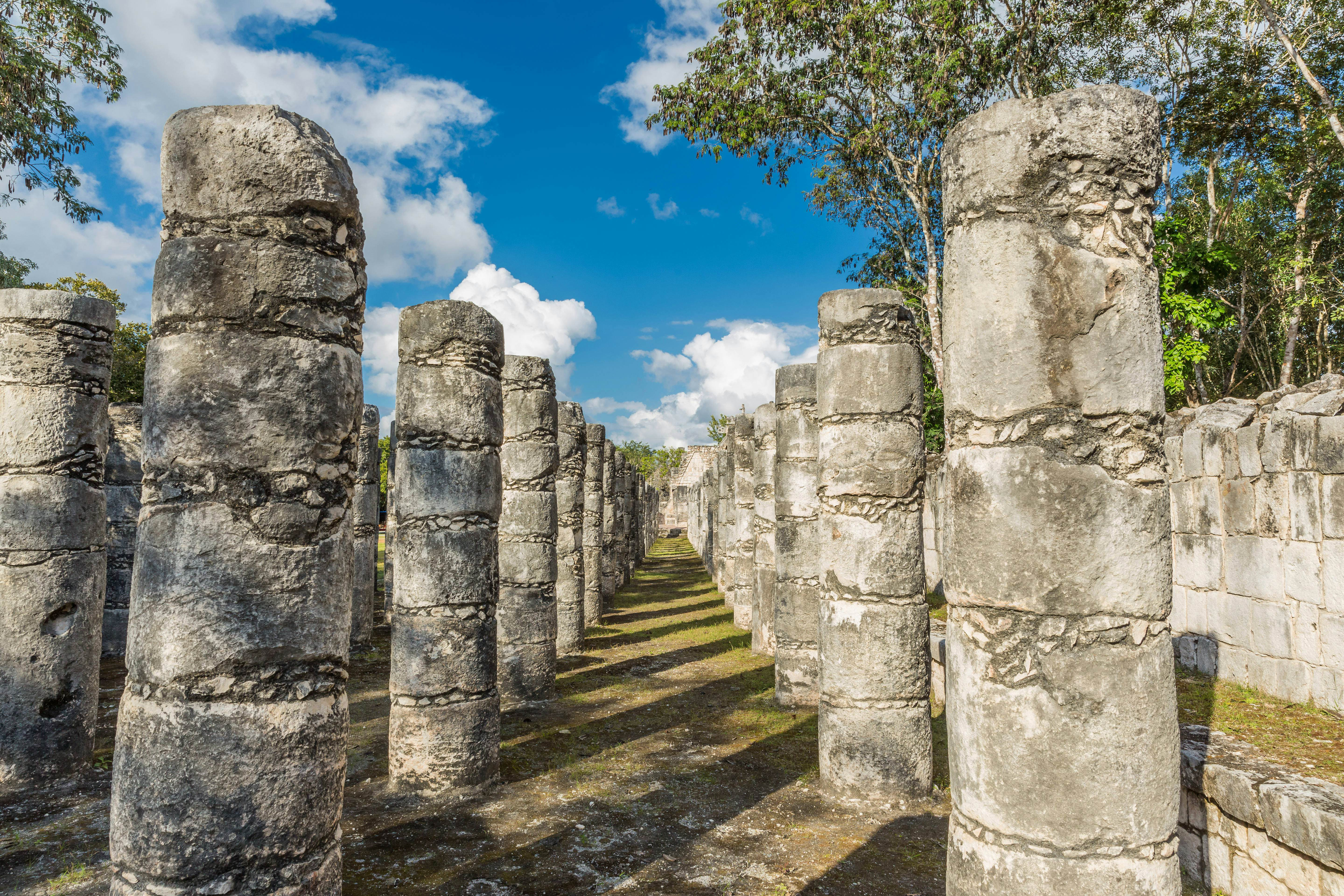 Temple of a thousand warriors at Chichen Itza.
Temple of a thousand warriors at Chichen Itza.
8. Chichén Itzá: Marvel at Pre-Columbian Mayan Architecture
Best for: Exploring ancient pre-Columbian architecture and Mayan history.
Chichén Itzá, one of the New Seven Wonders of the World, is a must-see destination and one of the most historically significant places to go in Mexico. Dating back to the 5th century, it’s Mexico’s most renowned ancient Mayan site.
The imposing El Castillo pyramid dominates the landscape, where during the spring and autumn equinoxes, the shadow of the serpent god Kukulcán appears to descend the staircase. Explore the Sacred Cenote, an important religious site, and the uniquely designed El Caracol observatory, showcasing the advanced astronomical knowledge of the Maya civilization. Chichén Itzá is a truly spectacular testament to the ingenuity and sophistication of the ancient Maya.
Planning Tip: Enhance your visit to Chichén Itzá by booking a tour with an English-speaking guide to delve deeper into the fascinating legacy of Maya astronomers and the site’s rich history. Be prepared for heat, humidity, and crowds, especially during peak season. Consider visiting early in the morning or late in the afternoon to avoid the midday heat and largest crowds. Note the site closes promptly at 5 pm. In the evenings, a post-sunset sound-and-light show offers a different perspective on the ruins.
9. Zihuatanejo: Experience Old Mexico Charm
Best for: Relaxed Old-Mexico atmosphere and traditional beach town vibes.
Zihuatanejo, benefiting from the development of its neighbor Ixtapa in the 1970s, retains the charm of a sleepy fishing village, even as tourism has grown. While Ixtapa was intentionally developed as a large resort destination, Zihuatanejo has maintained a more laid-back, traditional atmosphere.
Located just a short distance south of Ixtapa, Zihuatanejo offers a tranquil escape with beautiful seaside sanctuaries like Thompson Zihuatanejo on Playa La Ropa. This traditional Guerrero town is home to beautiful beaches with intriguing names, perfect for surfing, diving, fishing, and enjoying fresh seafood by the ocean.
Explore Playa Las Gatas (Cat Beach), rumored to be named after either wildcats or nurse sharks, or relax on Playa La Ropa (Clothes Beach), the town’s most popular beach with a legend of washed-up silk clothes from a shipwreck. Zihuatanejo offers a taste of authentic Mexico, away from the large-scale resorts.
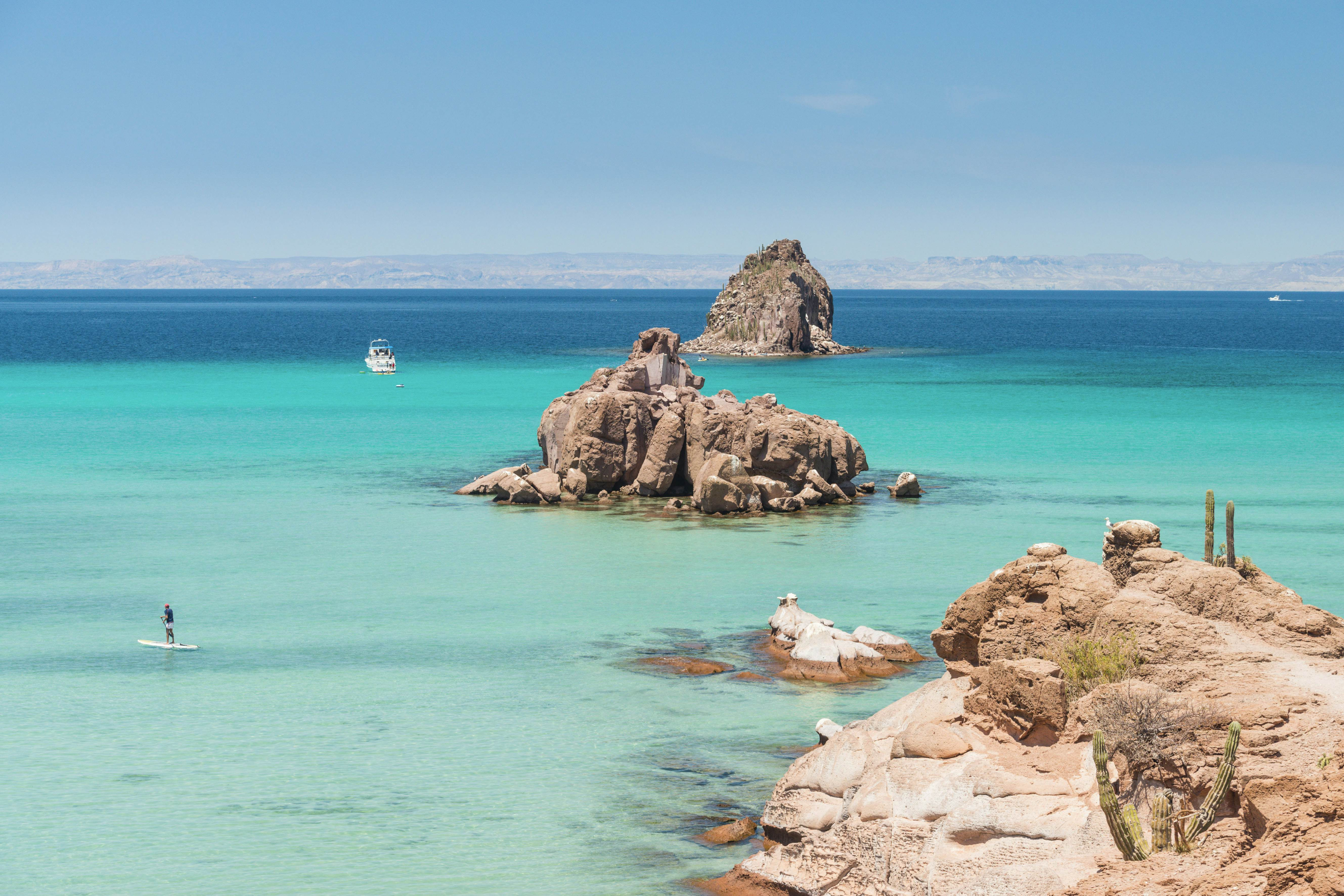 Paddle boarding (SUP) off the island of Espiritu Santo, a Unesco Biosphere Reserve in the Gulf of California, Mexico.
Paddle boarding (SUP) off the island of Espiritu Santo, a Unesco Biosphere Reserve in the Gulf of California, Mexico.
10. La Paz: Discover Tranquil and Diverse Beaches
Best for: Quiet, diverse beaches and marine wildlife encounters.
La Paz, the capital of Baja California Sur, is a haven for beach lovers of all kinds. This city serves as a gateway to the Sea of Cortez, a biodiversity hotspot home to 39% of the world’s marine mammal species.
Just a short drive from La Paz, Playa El Saltito offers tranquility and seclusion, particularly appealing during hot days. At night, its waters sparkle with bioluminescence, creating a magical spectacle. Playa Balandra, known for its unique mushroom-shaped rock formation, is often hailed as one of Mexico’s most stunning beaches.
A must-visit destination in the region is Espíritu Santo island, a UNESCO World Heritage site. Here, you can camp under a canopy of stars, snorkel with playful sea lions, and observe blue-footed boobies. Numerous tour operators offer kayaking, snorkeling, and other activities around Espíritu Santo, making La Paz an ideal destination for nature enthusiasts and those seeking serene beach experiences.
11. Tulum: Wellness Retreats and Boho Chic Vibes
Best for: Wellness experiences and a bohemian, eco-conscious atmosphere.
Tulum, once a secluded beach town in the Riviera Maya, has evolved into a world-renowned destination for honeymooners, wellness seekers, and those drawn to its unique boho-chic vibe. It has shed its former name, Zama, and embraced its identity as a hub for holistic tourism.
Travelers focused on spirituality will find a wealth of activities in Tulum, from cacao ceremonies and pre-Hispanic sound healing to open-air rooftop yoga classes. Tulum also offers a diverse culinary scene and accommodations to suit all budgets, ranging from budget-friendly beach shacks to luxurious resorts and eco-chic boutique hotels like La Valise Tulum.
The beaches in Tulum are picture-perfect, with Playa Ruinas, featuring remarkably well-preserved Maya ruins perched on a cliff overlooking the Caribbean Sea, being the most iconic. The surrounding area offers further exploration, including the vast Reserva de la Biosfera Sian Ka’an, the secluded fishing village of Punta Allen, and the ancient ruins of Cobá.
Planning Tip: Tulum Pueblo (the town center) offers more affordable dining and accommodation options, but it’s a 20-minute bike ride or 12-minute taxi to reach the beach. If staying directly on the beach is a priority, plan and book accommodations in advance to find the best options and prices.
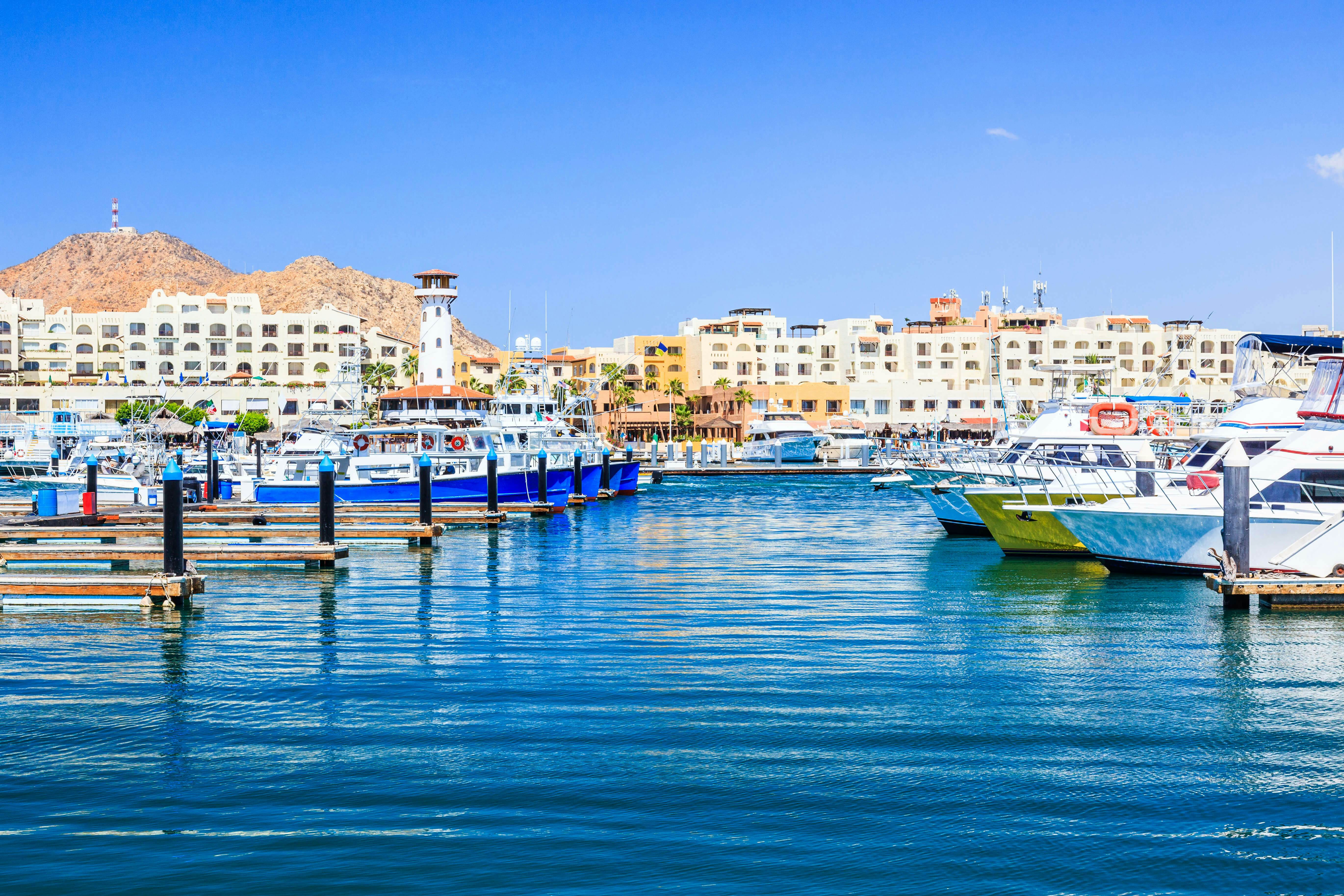 Cabo San Lucas, Mexico. The marina bay. marina, Mexico, Cabo San Lucas, Los Cabos, boats
Cabo San Lucas, Mexico. The marina bay. marina, Mexico, Cabo San Lucas, Los Cabos, boats
12. Los Cabos: Glitz, Glamour, and Party Scene
Best for: Luxury experiences, vibrant nightlife, and celebrity spotting.
Los Cabos, encompassing the sister cities of Cabo San Lucas and San José del Cabo, is a renowned destination. Cabo San Lucas is famous for its lively party scene, particularly popular among North American visitors, while San José del Cabo offers a more refined atmosphere with art galleries, luxury resorts frequented by celebrities, upscale boutiques, and decadent tequila tasting experiences.
Together, these sunny destinations at the southern tip of the Baja California Sur peninsula are consistently ranked among the top places to see in Mexico. Under the radiant Cabo sun, golf enthusiasts can enjoy world-class courses designed by legends like Jack Nicklaus, and surfers can tackle renowned surf breaks. While swimming is not always safe on all beaches, activities like deep-sea fishing, sea lion spotting, and whale watching (from mid-December to mid-April) attract water lovers year-round.
13. Pico de Orizaba: Conquer Mexico’s Highest Peak
Best for: Challenging treks and mountaineering adventures.
Pico de Orizaba, also known as Citlaltépetl, is a majestic, snow-capped volcano straddling the border of Puebla and Veracruz states. It is the highest peak in Mexico and the third-highest in North America, reaching an elevation of approximately 5636m (18,491ft).
Although dormant, with its last eruption recorded in 1846, Pico de Orizaba is a popular destination for experienced climbers. It is even used as a training ground by professionals preparing to climb Mount Everest. Treks typically begin from the village of Tlachichuca, and the ascent requires technical climbing skills. Pico de Orizaba represents the ultimate trekking and climbing challenge in Mexico.
For those preferring lower-altitude activities, the town of Orizaba offers attractions such as a scenic riverside walk, museums, galleries, and the unique “Iron Palace.” For panoramic views, take the cable car up Cerro del Borrego, offering vistas of the city’s historic churches, mountainous terrain, and the snow-capped Pico de Orizaba.
14. Copper Canyon Railway: Embark on a Scenic Train Journey
Best for: Unforgettable train rides through dramatic landscapes.
The Ferrocarril Chihuahua Pacífico (Copper Canyon Railway), also known as Chepe Express, is one of Latin America’s most remarkable rail journeys. The train climbs from sea level at Los Mochis to Creel, traversing the breathtaking rocky landscapes of the Copper Canyon (“Grand Canyon of Mexico”).
The train ride offers stunning views of alpine forests, subtropical valleys, Tarahumara villages, and glimpses into some of the world’s deepest canyons. Consider overnight stays at lodges overlooking the canyon rim to extend your exploration, with opportunities for hiking, horseback riding, and zip-lining in this incredible natural wonder.
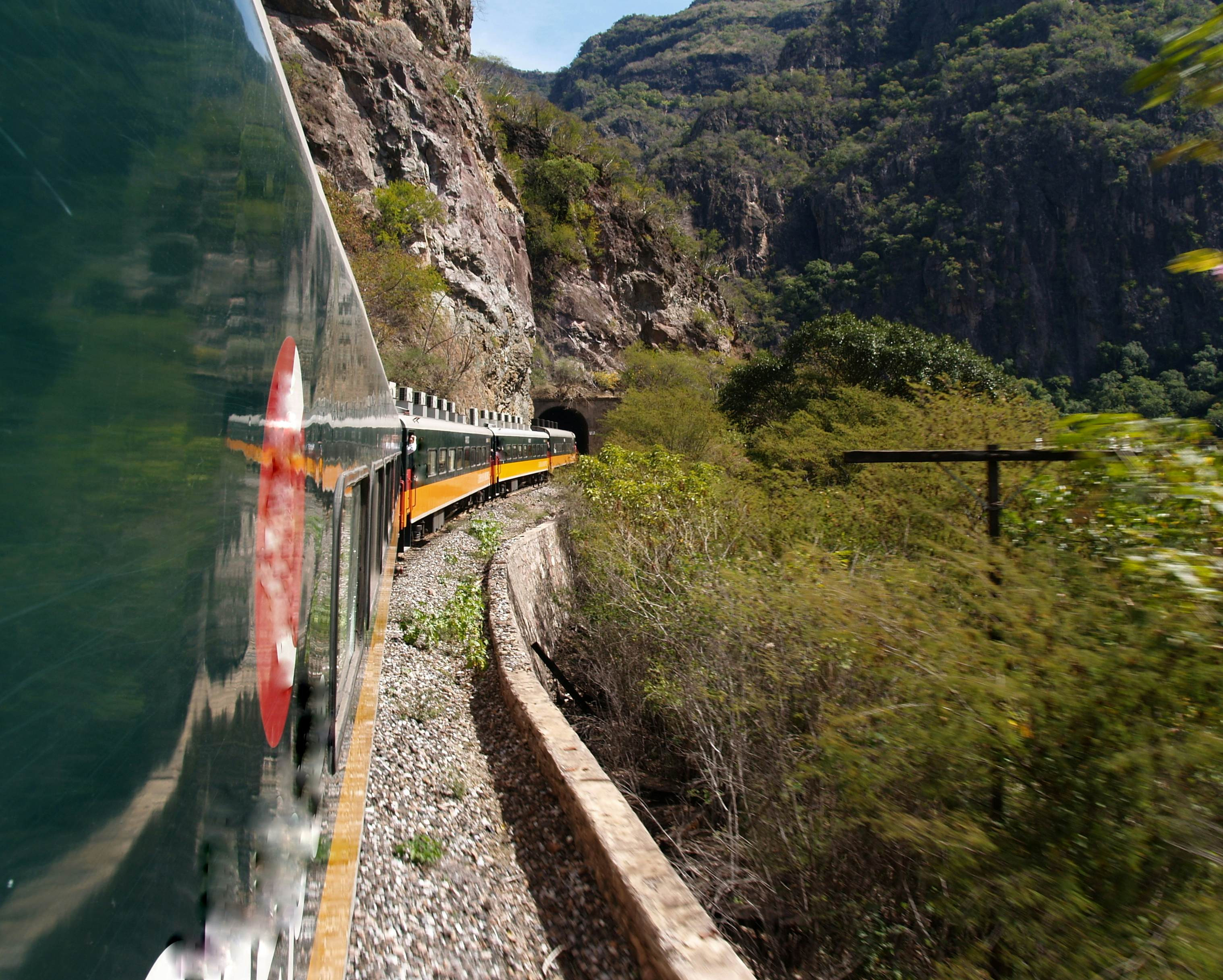 View of the side of train carriages winding their way along the Copper Canyon Railway
View of the side of train carriages winding their way along the Copper Canyon Railway
15. Oaxaca City: Mezcal Culture and Festive Celebrations
Best for: Mezcal tasting experiences and vibrant cultural festivals.
Oaxaca, once the capital of the Zapotec Civilization, is now recognized as Mexico’s premier mezcal-producing region. Oaxaca City boasts numerous atmospheric mezcalerias, such as La Popular, El Destilado, and La Mezcalerita, where you can sample fine mezcals produced throughout the state. Local guides offer tours to explore the city’s mezcal scene, one smoky sip at a time.
Oaxaca City is also famous for its frequent and colorful festivals. The city comes alive during Día de los Muertos (Day of the Dead) festivities at the beginning of November, as families honor loved ones with vigils, offerings, and parades. Another unique celebration is Noche de Rábanos (Night of the Radishes) on December 23, a radish carving competition dating back to 1897, where intricate radish scenes are displayed in the Zócalo.
Planning Tip: Venture a couple of hours outside Oaxaca City to Hierve el Agua, a stunning petrified waterfall-like rock formation. These mineral-rich infinity pools offer breathtaking views and a unique natural experience. Transportation options include bus, rental car, or hiring a driver.
These are just a few of the incredible places to go in Mexico. Each destination offers a unique flavor of this diverse and captivating country, ensuring an unforgettable travel experience. Whether you’re drawn to ancient history, vibrant culture, stunning beaches, or thrilling adventures, Mexico awaits with open arms and endless possibilities.
